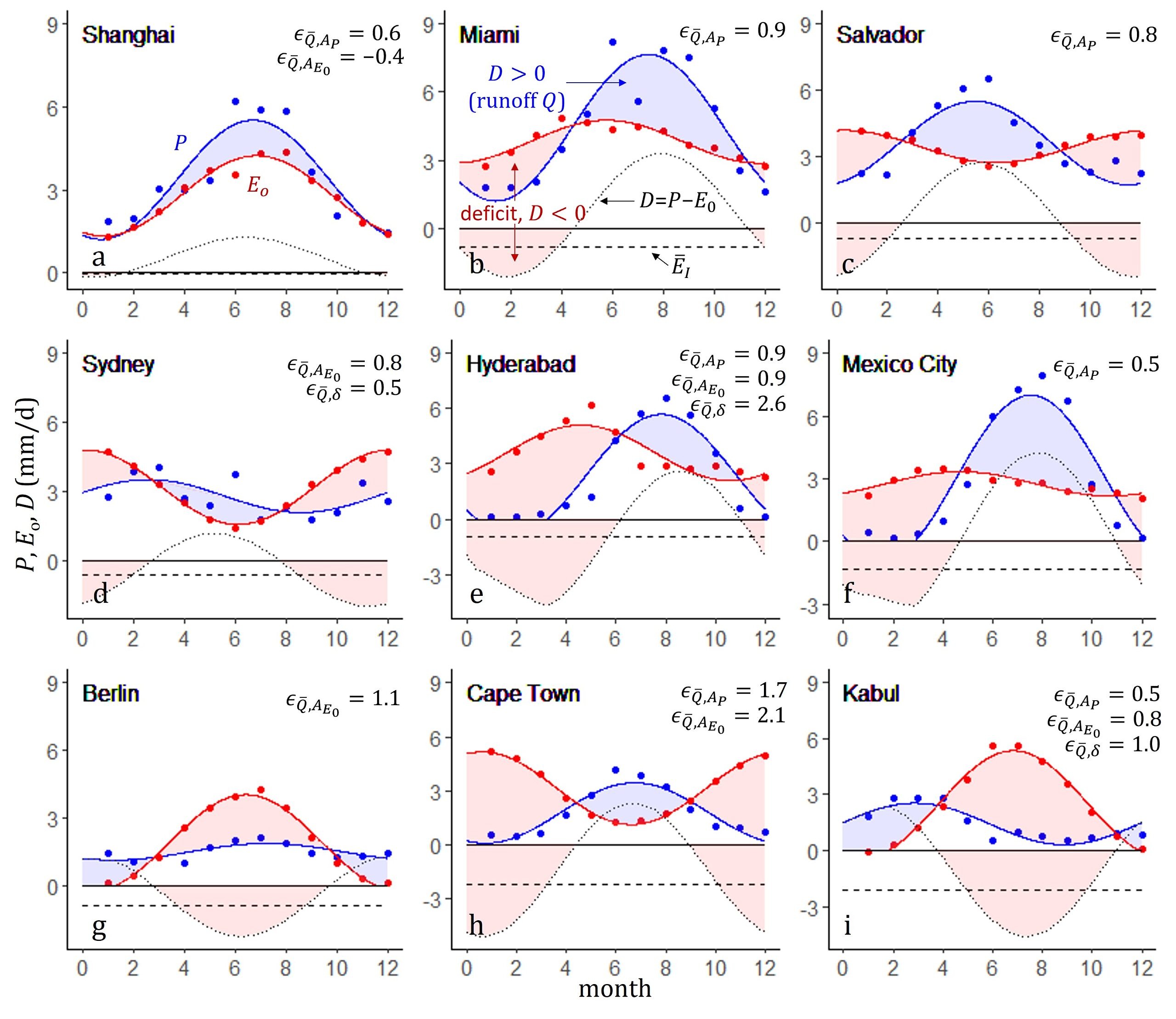Our new paper (link here) develops a simple analytical model that accurately predicts global runoff patterns (R2=0.93) based on deficits between sinusoidal representations of precipitation and potential evapotranspiration. An advantage of our approach is that the sensitivity of future water availability to climate change is an explicit result from partial derivatives of the model, described in terms of changes in P and PET mean, amplitude, and phase. Local water availability is ultimately controlled by the amount of precipitation that is evaporated from a landscape. Empirical measurements have long shown a coherent global pattern in precipitation partitioning, but a consensus theoretical explanation is surprisingly lacking. We test the hypothesis that intra-annual asynchrony between climatic water supply and demand drives the observed global patterns. We developed a simple analytical framework to predict runoff (available water) based on deficits between sinusoidal representations of precipitation (supply) and potential evapotranspiration (demand). Our framework accurately predicted global runoff patterns and reproduced a widely applied empirical precipitation partitioning relationship. Thus, supply and demand asynchrony provides both a mechanistic explanation for observed variation in global water budgets and the capability to predict water availability under future climates.
The figure below shows some specific examples.

